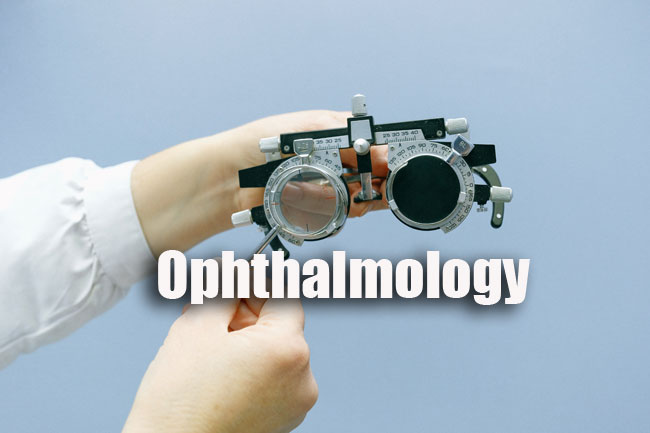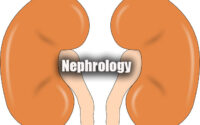Ophthalmology Questions and Answers
Ophthalmology Questions and Answers paper for the written examination is given below. Candidates who are looking for Ophthalmology exam Questions and Answers paper can find in this section. The applied candidates who are getting prepared for the Ophthalmology can view this page for the Ophthalmology Last Ten Years Questions and Answers Papers.

Download the Ophthalmology Questions and Answers & Solutions & make it as a reference for your exam preparation. Take advantage of these Ophthalmology Questions and Answers Papers in a proper manner to get qualifying Marks. Last 5 years Ophthalmology Questions and Answers Papers provided here. Candidates who are applied for the above exam can check and download the Ophthalmology Questions and Answers Papers from here.
Questions and Answers on Ophthalmology
1. Crowding phenomena is seen in:
1) Myopia
2) Presbyopia
3) Hypermetropia
4) Ambylopia
2. Vision 2020 is associated with :
1) Trachoma
2) Age related macular degeneration
3) Night blindness
4) Spring catarrh
3. Goldenhar’s syndrome is associated with what prominent ocular manifestation
1) Micro cornea
2) Basal cell carcinoma
3) Melanoma
4) Epibulbar dermoids
4. YAG laser wave is
1) Colorless
2) Red
3) Green
4) Blue
5. Bitemporal hemianopia indicates that the lesion is at :
1) Optic nerve
2) Optic tract
3) Occipital lobe
4) Optic chiasma
6. Which muscle is intorter of eye:
1) Inferior oblique
2) Inferior rectus
3) Superior rectus
4) Medial rectus
7. Under the school eye screening programme in India, the initial vision screening of school children is done by:
1) School teachers
2) Primary level health workers
3) Ophthalmic assistant
4) Medical officers
8. Ring of soemmering is seen in :
1) Siderosis
2) Complicated cataract
3) After cataract
4) Traumatic cataract
9. Hirschberg test is used to detect –
1) Manifest Squint
2) Field Charting
3) Latent squint
4) Nystagmus
10. Excimer laser photorefractive keratectomy :
1) is excellent for hyperopia upto 5 diopters
2) is best for myopia between 2 and 6 diopters
3) Uses a 48 mm excimer laser
4) Should be used to correct astigmatism upto to 4.5 diopters
11. With-the-rule astigmatism is :
1) A negative cylinder at 180
2) A positive cylinder at 180
3) A negative cylinder at 90
4) Less common than against-the-rule astigmatism
12. Spring catarrh is :
1) Type I hypersensitivity reaction
2) Type II hypersensitivity reaction
3) Type III hypersensitivity reaction
4) Type IV hypersensitivity reaction
13. Macular function tests are all except :
1) Red Green glasses.
2) Entoptic view test.
3) Maddox rod test.
4) Two point discrimination test.
14. Pseudoexfoliation syndrome is diagnosed in a patient. All of the following are true except :
1) the condition is found worldwide
2) the peak age is 45
3) it is rare in blacks
4) it is bilateral in over 50% of patients
15. The difference in magnification between an intraocular lens and the original crystalline lens in approximately:
1) 0.035
2) 0.025
3) 0.015
4) 0.005
16. Whitnall’s ligament is seen in
1) Muller’s muscle
2) Frontal muscle
3) Levator palpebrae superioris
4) Superior oblique
17. Steroid induced cataract is :
1) Posterior subcapsular cataract
2) Anterior subcapsular cataract
3) Nuclear cataract
4) Cupulliform cataract
18. All the following are risk factors for the development of retinal breaks except :
1) Hypermetropia
2) Myopia
3) Lattice degeneration of the retina
4) Ocular nonsurgical trauma
19. Fluctuating refractive errors with cataract are seen in :
1) Morgagnian cataract
2) Diabetic cataract
3) Intumescent cataract
4) Traumatic cataract
20. Chronic dacrocystitis is most often caused by
1) Neisseria gonococci
2) Staphylococci
3) Chlamydia trachomatis
4) Streptococcal pneumoniae
| Practice Set | MCQs |
| Quiz | Questions and Answers |
| Ophthalmic Surgery |
21. Roth’s spots are seen in :
1) Diabetes mellitus
2) Sub acute bacterial endocarditis
3) Eales disease
4) Optic nerve tumours
22. Blood in Schlemm’s canal is seen in:
1) phacomorphic glaucoma
2) carotid-cavernous fistula
3) angle recession glaucoma
4) pseudo exfoliation
23. Ocular muscle most commonly involvend in thyrotoxic myopathy is
1) Superior oblique
2) Inferior oblique
3) Inferior rectus
4) superior rectus
24. Corneal curvature is measured by
1) Pachymeter
2) Keratometer
3) placido’s disc
4) specular microscope
25. Macular function tests include A/E
1) amsler grid test
2) photo stress test
3) indirect slit lamp biomicroscopy
4) retinal electoretinogram
26. For slit lamp biomicroscopic examination all of these lenses are used except
1) hruby lens
2) goldman’s 3mirror contact lens
3) 90 d lens
4) direct ophthalmoscope
27. in fincham’s test if coloured halo is found to be broken up into segments,then dignosis may be
1) PACG
2) OAG
3) immature cataract
4) mucopurulent conjunctivitis
28. homonymous hemianopia field defect may be caused by which of the following lesions:
1) A lesion of the optic chiasm
2) A lesion of the occipital lobe
3) Optic Neuritis
4) An attack of migraine
29. Which of the following is contraindicated in the early management of a patient with hyphema
1) Steroids
2) Cycloplegics
3) IOP lowering agents
4) Immediate evacuation of hyphaema
30. Presenting symptoms of viral conjunctivitis do NOT include:
1) Watery discharge
2) Diffuse conjunctival injection
3) Foreign body sensation
4) purulent discharge
31. Corneal topography can be used for:
1) Diagnosing keratoconus
2) Before cataract surgery to determine the curvature of the cornea
3) Detecting astigmatism
4) All of the above
32. Which of the following is the first line management of keratoconus
1) collagen cross linking
2) Hard contact lenses
3) Penetrating keratoplasty
4) spectacles
33. Mascular edema is caused by all except
1) Microancurysm
2) Capillary dilatation
3) Increase permeability
4) none
34. Macular sparing homonymous hemianopia is seen in lesions of
1) Optic tract
2) Parietal lobe
3) Temporal lobe
4) Occipital lobe
35. Tarsorrhaphy may be indicated in which cranial nerve palsy
1) Fourth nerve
2) Third nerve
3) Seventh nerve
4) Sixth nerve
36. Optic atrophy has been reported following use of
1) Ethambutol
2) Streptomycin
3) 3. Isoniazid
4) All of above
37. The pupil which is small contracts on convergence but does no react to light is
1) Tonic pupil of Ade
2) Pupil in Horner’s syndrome
3) Marcus Gunn pupil
4) Argyl Robertson pupil
38. Microsperophakia in a patient of stocky build and small stubby fingers is most likely to be
1) Marfan’s syndrome
2) Ehler Danlos syndrome
3) Weil Marchesani syndrome
4) Alport syndrome
39. Seconday open angle glaucoma in uveitis can be due to
1) A total peripheral anterior synechia
2) Annular synechia
3) Occlusion pupil
4) Trabeculitis
40. Tensilon test involves injection of
1) Physostigmine
2) Acetylcholine
3) Neostigmine
4) Edrophonium chloride
41. Fixation reflex develops at age of:
1) 1 month
2) 4 months
3) 8 months
4) 6 months
42. Relative afferent papillary defect (RAPD) is characteristically seen in damage to:
1) Optic nerve
2) Optic tract
3) Lateral geniculate body
4) Occulomotor nerve
43. Commonest cause of traumatic myopia after injury occurs
1) damage to suspensory ligament
2) Anterior dilocation of lens
3) Posterior subluxation of lens
4) Ciliary spasm
44. If the pupil is not in normal position it is termed as
1) Dyscoria
2) Corectopia
3) Polycoria
4) Aniscoria
45. In LPS resection which ligament is landmark for resection site
1) Ligament of Lock wood
2) Whitnalls Ligament
3) Suspensory ligament of zinn
4) none of the above
46. A old age person of seventy years come in eye OPD with inetermittent epiprora, What is the most likely cause physiological epiphora
1) Punctum stenosis
2) Obstruction at lower canalicular region
3) Structure of naso lacrimal duct
4) Orbicularis muscles weakness
47. What is the most common lympho proliferative isorder of orbit
1) Leukemia
2) Lymphoma
3) Atypical lymphoid hyperplasia
4) Histocytosis
48. Corneal Stroma and endothelium develops from
1) Neuroectodum
2) Surface Ectodum
3) Cranial neural crest cell
4) Mesoderm
49. In epithelial oedema the visual symptoms of glare and haloes may be the result of
1) Refractive effects
2) Differactive effects
3) Interference effects
4) Combine of all
50. Light tissue interaction for yag laser work on principle of
1) Photo coagulation
2) Photo disruption
3) Photo Ablation
4) none of the above



